Panchakarma Treatments
The essential detoxification or purification method in Ayurveda is Panchakarma. It is known as the classical form of Ayurveda treatment. It is the first treatment before treating any diseases. It maintains the body balance by removing the toxins from the body. It is to provide life – long activeness for all the body parts. Panchakarma is the purification therapy for balancing vitiated Vata, Pitta, Kapha (toxins) from the body.
Benefits:
- Metabolic disorders are the main reasons for diseases. Panchakarma increases the natural ability of digestion by removing all the toxins which form an imbalance of digestive capacity.
- Metabolic rate increases and also the body gets balanced by eliminating toxins, done by Panchakarma.
- It purifies the body by detoxification.
- Increases the metabolism and enhances digestive capacity by opening any blocked channels.
- Mind relaxation and rejuvenation can be achieved through Panchakarma treatment.
- Restoring Agni and reducing AMA, strengthens muscle and tissue power in the body system.
Types of Panchakarma Treatments
1. Vamana - Induce Vomiting

Vamana is a therapeutic procedure in Ayurveda, an ancient system of medicine originating from India. It’s a form of purification or detoxification used to balance the Kapha dosha, one of the three fundamental energies in the body according to Ayurvedic principles.
This oral vomiting treatment, which involves therapeutic vomiting to remove excess mucus, is advised for patients with persistent asthma, tonsillitis, anemia, chronic anxiety, sinus issues, cough, and cold. This therapy can be helpful for those with edema, epilepsy, skin conditions, fever, appetite loss, and lymphatic blockage.
The caused Kapha dosha is treated with this therapy, which primarily removes toxins from the digestive and respiratory systems. Vamana efficiently eliminates the toxins that have collected in the body and respiratory system due to Kapha. Thus, the mouth is used to clear waste and congestion. After vomiting, the sinuses are cleansed, which relieves breathing difficulties, congestion, and wheezing.
Benefits:
- Balancing Kapha Dosha: Helps alleviate conditions caused by excess Kapha, such as asthma, allergies, obesity, and certain skin disorders.
- Detoxification: Removes accumulated toxins from the body.
- Enhanced Digestion: Improves digestive capacity and metabolism.
- Promotion of Overall Wellness: Can enhance mental clarity and overall well-being.
2. Virechana - Purgation

Virechana is an Ayurvedic purification therapy aimed at cleansing the body by eliminating excess Pitta dosha and toxins from the gastrointestinal tract and liver. This therapy involves the controlled administration of purgative substances to induce bowel movements and expel toxins from the body.
As a result, individuals turn to this type of speech for various stomach issues. Intestinal colic, asthma, jaundice, gastritis, ulcers, and IBS can all be effectively treated with virechana. Virechanam is used to treat or lessen fever, skin issues, worm infection, hematemesis, epilepsy, intestinal disorders, anemia, headaches, burning eyes, persistent cough, rhinitis, gout, gynecological disorders, rheumatic illnesses and hunger.
The abdomen is used to remove the affected doshas during the Virechana karam. The purpose of the medications used in purgation therapy is to vitiate and bring the doshas into the abdomen. The patient undergoes the following procedures throughout the procedure: oleation (ingesting medicinal ghee either directly or in combination with suggested food), followed by fomentation (induced sweating therapy), vomiting (induced vomiting), and Samsarjana Karma (post-operative diet control). Three to seven days are spent following the internal oleation. A three-day medicinal steam bath is then administered. In Ayurvedic panchakarma treatment, the patient is recommended a light and warm food one day before to the commencement of Virechana karma.
Benefits:
- adjusts the pitta dosha.
- removes extra mucus and toxins from the small intestine, which aids in better digestion.
- increases metabolism by removing hepatic congestion.
- facilitates the digestion of fat, which aids in weight loss.
- solves a variety of digestive issues.
- solves rashes, allergies, and skin diseases.
- helps treat joint diseases, paraplegia, hemiplegia, etc.
3. Nasya - Nasal Medication
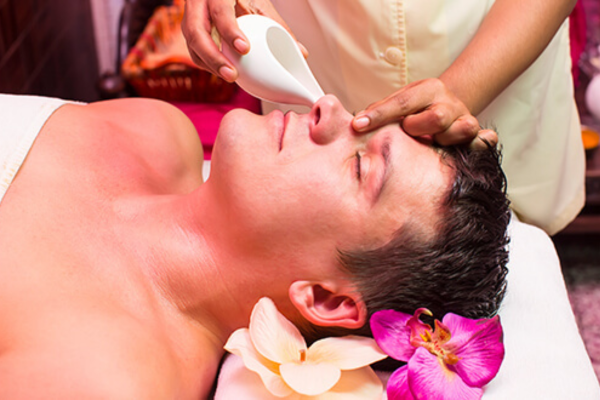
Nasya is an Ayurvedic therapeutic procedure involving the administration of herbal oils, powders, or medicated substances into the nasal passages. It’s a form of nasal therapy designed to cleanse, lubricate, and rejuvenate the nasal passages, sinuses, and related structures.
The physician also chooses the oil for Nasya depending on the patient’s body composition, dosha levels at the time, and the stage of illness that is currently active. In terms of general circumstances, two commonly utilized oils for Nasya are Anu Thailam and Ksheerabala 101.
There are several approaches of treating nasya. Here is a list of the different kinds of Nasya therapies that one can take for a better knowledge.
- Brumhana Nasya : This treatment uses ghee, oils, salt, medicated ghee, and other ingredients to treat vata-related conditions like anxiety, nervousness, headaches, and migraines.
- Marshya nasya : The little finger is used to put a small amount of oil or ghee into the nostrils. This helps to release tension and opens the deep tissues when combined with a light massage. It can be carried out as often as needed or infrequently as preferred.
- Shamana nasya : Medicated decoctions, teas, fresh herb juices, or dosha-specific medicated oils are employed. The following substances are used: tikta ghee (for vata or pitta), vacha oil (for kapha or vata), and brahmi ghee (for pitta).
- Navana nasya : Decoctions, oils, and freshly squeezed juices are combined and given based on the dosha that is inflamed. utilized to treat pitta-vata or pitta-kapha imbalances. Brahmi juice (for pitta) and vacha juice (for kapha or vata) are two of the materials used.
Benefits:
- Sinus and Respiratory Health: Helps alleviate conditions like sinusitis, allergies, congestion, and headaches related to nasal issues.
- Lubrication and Cleansing: Nourishes and lubricates the nasal passages, promoting easy breathing and clearing blockages.
- Brain Health: Nasya is believed to have benefits for mental clarity, focus, and overall brain health.
- Relief from Dryness: Especially beneficial in dry or cold climates to prevent nasal dryness and irritation.
4. Rakta Mokshana (Leach Therapy) Bloodletting
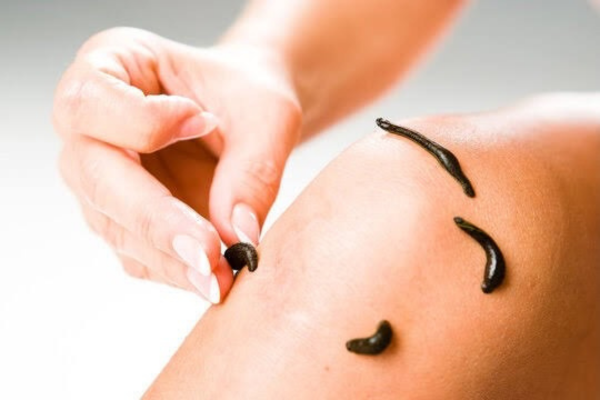
Rakta Mokshana, also known as bloodletting or blood purification, is an ancient therapeutic procedure in Ayurveda aimed at removing excess or vitiated blood from the body. It’s considered one of the Panchakarma treatments (a set of five cleansing therapies) used to balance doshas and treat various ailments.
There are two varieties of raktamokshana in Ayurveda:
1. Shastra Visravana. The application of metallic instruments, separated into two groups:
- A syringe is used in siravyadhana, or venipuncture, to draw blood from a vein.
- Pracchana: numerous small skin wounds made with a metallic blade or scalpel that allow blood to seep out.
Alabu pracchana is a subtype of this latter species. This is the process of creating a vacuum over the incisions using a bottle gourd or other vegetable with a conical form. It is comparable to and the ancestor of wet cupping, which emerged later in China and Europe.
2. Anushastra visravana. techniques that don’t include metallic tools. There are two categories for this:
- Jalaukavacharana:putting leeches at a specific location. These days, alabu pracchana and this are the most popular raktamokshana techniques.
- Shrungavacharana, which refer to the use of a cow’s horns. Treatment with this is mostly for Pitta/Rakta situations with a high degree of vata vitiation.
Benefits:
- Removal of Toxins: raktamokshana aids in the elimination of toxins from the blood. This therapy helps with detoxification by getting rid of dirty or dirty blood, which lessens the body’s burden from accumulated toxins.
- Better Circulation and Blood Health: It has the potential to improve blood quality and circulation. It may improve blood quality by encouraging the body to produce new, healthier blood cells by eliminating extra or harmful blood.
- Relief of Skin Disorders: raktamokshana is frequently used to treat skin issues brought on by blood impurities. It is said to help with skin disorders brought on by blood impurities, such as eczema, psoriasis, acne, and other problems.
- Dosha Balancing: Raktamokshana, in Ayurveda, is said to assist in balancing the doshas, particularly Pitta, which is connected to blood. Pitta aggravating problems may be managed by eliminating excess Pitta or resolving imbalances.
5. Basti - (Medicated Enema)
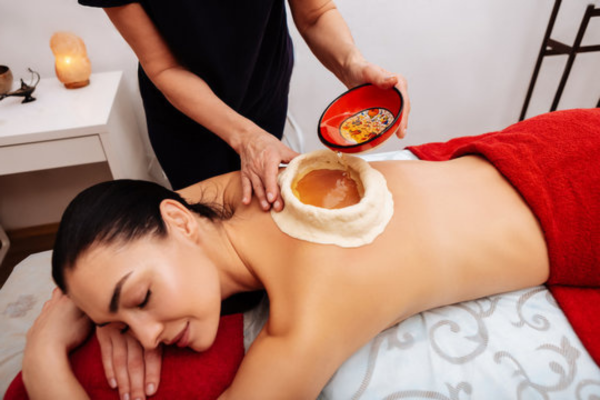
Basti, in Ayurveda, refers to an enema therapy aimed at cleansing the colon and balancing the doshas (Vata, Pitta, and Kapha) within the body. It’s considered one of the main therapies in Panchakarma, the set of five cleansing procedures in Ayurveda.
Benefits:
- Internal Nourishment : Yogavasti and Ksheera Basti are two examples of basti treatments that can aid in the body’s sustenance. Since Basti directly impacts the colon, the medicinal mixtures’ sustenance may spread deep into the body. Moreover, internal nutrition supports stronger immunity.
- Detoxification: Basti therapy facilitates the removal of accumulated Vata dosha and toxins from the intestines. The colon is the primary site of bacterial growth and the growth of several illnesses. Basti efficiently eliminates dangerous poisons by having a direct impact on the colon.
- Digestive Health: The majority of individuals seeking Ayurvedic Basti treatment have digestive issues of some kind. Many digestive problems, including indigestion, bloating, constipation, and flatulence, can be successfully treated with basti therapy. It supports digestive health and aids in regular, healthy bowel motions.
- Nervous System Support: An excellent treatment for tension, anxiety, and stress is basti therapy. It guarantees a healthy and strong nervous system by assisting in the reduction of these mental health issues.
- Pain Relief: Patients who experience persistent and recurrent stomach discomfort can benefit from Basti therapy by achieving regular bowel movements. Additionally, proper detoxification lowers the likelihood of inflammation.
6. Kshaya Basti

Kshaya Basti is an Ayurvedic therapeutic procedure that involves the administration of medicated enemas with the aim of addressing conditions associated with depletion or loss of bodily tissues.
Benefits:
- Nourishment of Tissues: Kshaya Basti is designed to nourish the body’s tissues by delivering specific herbal decoctions or oils directly into the colon. This helps replenish essential nutrients, promoting overall health and vitality.
- Rejuvenation: The therapy is believed to have rejuvenating effects on the body, helping to restore vitality and energy levels. It is particularly recommended in conditions where there is a significant reduction in strength and vigor.
- Improvement of Digestive Function: The enema therapy aids in balancing and strengthening the digestive system. It can enhance the absorption of nutrients, regulate bowel movements, and alleviate digestive discomfort.
- Detoxification: Kshaya Basti is thought to help in the elimination of accumulated toxins from the body. By flushing out impurities through the colon, the treatment supports the detoxification process, promoting a cleaner and healthier internal environment.
- Management of Chronic Diseases: This Ayurvedic procedure is often employed in the management of chronic diseases where there is a persistent depletion of bodily resources. Conditions such as rheumatoid arthritis, diabetes, and certain autoimmune disorders may benefit from the nourishing effects of Kshaya B
7. Sadyo Vamana
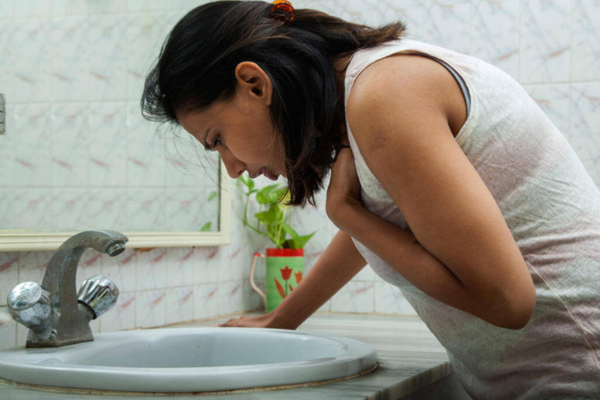
Sadyo Vamana is an Ayurvedic therapeutic procedure designed to induce controlled vomiting, aiming to facilitate detoxification and restore balance among the three doshas—Vata, Pitta, and Kapha.
Benefits:
- Detoxification: Sadyo Vamana is a powerful method for eliminating excess doshas and toxins from the body. By inducing controlled vomiting, the procedure helps expel accumulated impurities, promoting a cleaner and healthier internal environment.
- Balancing Doshas: According to Ayurveda, health is maintained when the three doshas are in balance. Sadyo Vamana is specifically recommended to address imbalances in the Kapha dosha, which is associated with qualities like heaviness and congestion. The therapy helps restore harmony among the doshas, promoting overall well-being.
- Respiratory Health: The procedure is often recommended for individuals with respiratory conditions, particularly those related to excess Kapha. Sadyo Vamana can help alleviate symptoms of congestion, cough, and respiratory disorders by clearing excess mucus and promoting better lung function.
- Improved Digestive Function: By clearing the digestive tract and enhancing the digestive fire (agni), Sadyo Vamana can contribute to improved digestion and assimilation of nutrients. This may be beneficial for individuals experiencing indigestion, sluggish digestion, or related issues.
- Weight Management: Sadyo Vamana is considered effective for managing weight-related issues, especially in cases where excess Kapha is involved. The therapy can help reduce accumulated fat and water retention, supporting weight loss and a healthier metabolism.
8. Sadyo Virechana
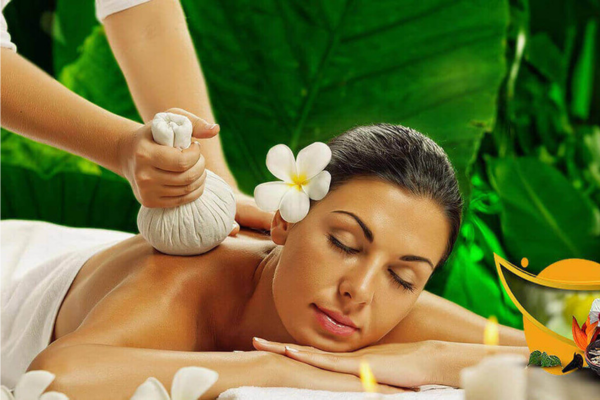
Sadyo virechana is an Ayurvedic therapeutic procedure that involves induced purgation for the purpose of detoxification and balancing the doshas (Vata, Pitta, and Kapha).
Benefits:
- Detoxification: Sadyo Virechana is a powerful method for eliminating excess doshas and toxins from the body. Through the induction of controlled purgation, the therapy helps to remove accumulated impurities, promoting a thorough detoxification process.
- Balancing Doshas: Ayurveda emphasizes the importance of maintaining a balance among the three doshas. Sadyo Virechana is specifically recommended to address imbalances associated with excess Pitta dosha, helping to restore equilibrium and harmony in the body.
- Digestive Health: The induced purgation in Sadyo Virechana helps to clear the digestive tract and enhance digestive fire (agni). This, in turn, supports improved digestion, absorption of nutrients, and relief from digestive issues such as constipation and indigestion.
- Skin Disorders: Sadyo Virechana is often employed to address skin disorders associated with excessive Pitta, such as acne, rashes, and inflammation. The therapy helps in purifying the blood and eliminating toxins, contributing to clearer and healthier skin.
- Liver Cleansing: The procedure is believed to have a beneficial impact on the liver by promoting the elimination of toxins. This can be particularly helpful for individuals with liver-related issues or those looking to enhance liver function.
